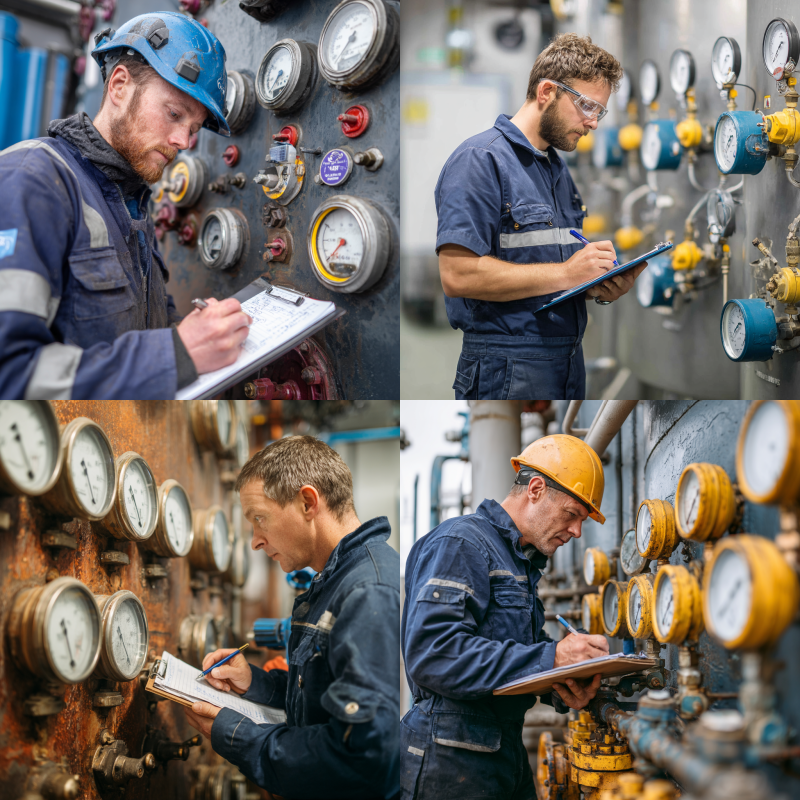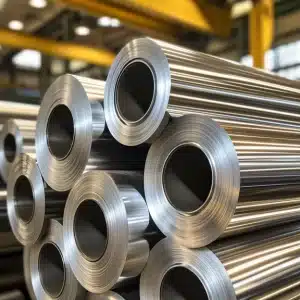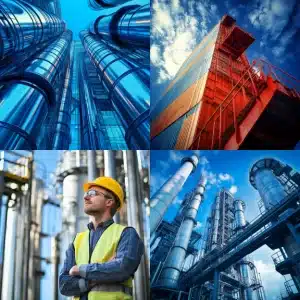
Unlocking What Is the Difference Between a Pressure Vessel and a Tank
Pressure Vessel vs. Tank: Key Differences Explained for Industrial Buyers
Understanding what is the difference between a pressure vessel and a tank is crucial when choosing between storage solutions—especially if you’re sourcing reliable fabrication in the USA. While these containers may appear similar, the difference between tank and pressure vessel goes far beyond surface-level design.
Pressure vessels are engineered to contain fluids at pressures significantly above or below atmospheric pressure, whereas tanks are typically designed for storage at or near atmospheric pressure. This single variable impacts everything: cost, compliance, safety, and application.
In this definitive guide, you’ll explore the pressure vessel classification vs tanks, learn about industry-specific use cases, and gain the insights needed to make informed equipment decisions for your operation.
How pressure vessels work
A pressure vessel is specifically designed to hold gases or liquids at a pressure substantially different from atmospheric pressure. According to OSHA and ASME standards, this container must safely withstand internal or external pressures without rupturing or leaking. If you want an in-depth overview of fundamental concepts, you can check out what is a pressure vessel.
Key roles and applications
Pressure vessels handle high-stress situations and demanding environments. Examples include chemical process reactors, compressed gas storage cylinders, and hot-water boilers. These containers are often found in oil refineries, power plants, pharmaceuticals, and even food manufacturing. In 2009, a poorly maintained vessel contributed to a deadly explosion at a major facility, highlighting the critical need for regular inspection and adherence to safety standards.
Design specifics
- Strong materials: Carbon steel, stainless steel, and specialty alloys like titanium or nickel-based alloys are common due to their high strength and corrosion resistance. You can learn more in what materials are used in pressure vessels.
- Internal pressure control: Flanges, gaskets, and welded seams must be robust enough to hold pressure significantly above atmospheric levels—often more than 15 PSI.
- Regulatory requirements: Pressure vessels are governed by stringent guidelines, such as the ASME Boiler and Pressure Vessel Code. If you need details on how these codes work, you might check what are pressure vessel codes.
Good news—this extra layer of scrutiny means well-fabricated vessels are remarkably safe and durable when correctly maintained.
How tanks differ in design
Tanks usually store gases or liquids at or near atmospheric pressure. Instead of focusing on holding high internal pressures, tanks emphasize storage capacity and structural stability. You will see them in applications like water storage, grain silos, or general chemical holding units.
Simpler structure, broader uses
Since tanks do not need to contain extreme pressures, their design can be less complex and potentially more cost-effective. Materials often include mild steel or plastic, especially for low-stress storage needs. You may find tanks for oil, chemicals, or even dry bulk goods across many industrial plants.
Tanks can be large, open-air reservoirs (like farmland water troughs) or fully enclosed. Either way, they lack the specialized reinforcements vital for pressurized environments. As a result, they can be simpler to maintain and inspect, yet they rarely serve the same pressurized functions as dedicated vessels.
A look at comparative design
When comparing pressure vessels to standard tanks, several critical design differences stand out. Pressure vessels are engineered to handle higher operating pressures, often exceeding 15 PSI, and are built from robust materials like carbon steel or specialized alloys to ensure safety and integrity. Their shapes are typically cylindrical, spherical, or elliptical, which helps evenly distribute pressure. In contrast, standard tanks usually operate near atmospheric pressure and can be constructed from milder materials such as stainless steel or plastics. They often take on simpler shapes, like cylindrical or rectangular forms. One of the most important distinctions lies in regulatory standards—pressure vessels are subject to strict guidelines from organizations like ASME, API, and OSHA, whereas regular tanks face less stringent, primarily storage-focused regulations.
Industries and applications
Both pressure vessels and tanks appear in numerous sectors. The difference lies in how each industry puts them to work.
Common industries for pressure vessels
- Oil and gas processing: Refining crude oil involves high-temperature and high-pressure reactions.
- Chemical manufacturing: Reactors often demand controlled, pressurized environments.
- Power generation: Steam boilers and heat exchangers rely on pressurized steam to drive turbines.
Common industries for tanks
- Agriculture: Large tanks feed livestock or store grains.
- Water treatment: Municipal water storage structures keep reserves at low pressure.
- Food and beverage: Holding tanks maintain liquids at near-atmospheric pressure before packaging.
A 2023 survey revealed that over 70% of chemical plants rely on specialized pressure vessels for core processes, while more than 60% also operate conventional atmospheric tanks for simpler storage tasks [2]. This goes to show that most facilities use both container types for optimal efficiency.
Selecting materials for your pressure vessel
If you are choosing or upgrading a pressure vessel, material selection can become your top priority. According to the PALA Group [3], metals like carbon steel, stainless steel, nickel alloys, and titanium are common because they handle internal pressure, corrosion, and temperature extremes effectively.
- Carbon steel: Known for its strength and cost-efficiency, popular in moderate-pressure environments.
- Stainless steel: Offers higher corrosion resistance, ideal for food processing or harsh chemicals.
- Nickel alloys (Monel, Inconel, Hastelloy): Excellent for heavy-duty chemical applications due to corrosion and thermal resistance.
- Titanium: Biocompatible, incredibly strong, handles high heat very well, though it comes at a higher price point.
Feel free to explore the nuances of choosing the right metals in how to choose materials for pressure vessels. Good news—modern metallurgical advances mean you have broad options to balance cost, durability, and compliance.
Safety and regulatory considerations
Safety is the keyword when dealing with any container that holds dangerous or valuable contents. Pressure vessels undergo more rigorous scrutiny than simple tanks because a failure can lead to catastrophic accidents, such as explosions or toxic leaks. You should always follow federal guidelines and industry best practices, including frequent inspections and nondestructive testing methods like ultrasonic or radiography.
Rigorous testing procedures
Typical tests for pressure vessels include hydrostatic checks, pressure holding tests, and visual inspections to spot corrosion, cracks, or weld flaws. You can read more about ongoing maintenance best practices in how to maintain a pressure vessel. Strict codes from organizations like ASME keep both operators and the public safe, so you will want to ensure your vessel meets or exceeds these requirements.
Tanks require simpler safety checks, mostly focusing on structural integrity and leak prevention at atmospheric conditions. These checks are still vital if your tank holds hazardous chemicals or flammable liquids, but the risk profiles differ from those of highly pressurized vessels.
What is the difference between a pressure vessel and a tank
What is the difference between a pressure vessel and a tank? It comes down to pressure containment. Pressure vessels handle high or low pressures beyond atmospheric levels, requiring strong materials and strict codes. Tanks store contents at or near atmospheric pressure, making them easier to design but limited to low-stress use.
For pressurized liquids or gases, a certified pressure vessel is the safer choice. For simple fluid storage, a tank is usually sufficient. Knowing the difference helps you choose the right solution for your needs.
Need a reliable partner?
Red River specializes in the design and manufacturing of pressure vessels. We also fabricate related items such as prefabricated spools and skid packages.
Reach out to us today and experience the Red River difference. Where American-made products and American Values come together, we care more.
Frequently Asked Questions
1. What is a pressure vessel?
A pressure vessel is a closed container designed to hold gases or liquids at pressures significantly different from atmospheric pressure (typically above 15 psi). These engineered vessels feature specific wall thickness, materials, and safety components to prevent failure. Common examples include boilers, air compressor tanks, propane cylinders, and autoclaves. All pressure vessels must comply with safety codes like ASME standards.
2. What are the different types of pressure vessels?
Pressure vessels are classified by:
Shape: Cylindrical (most common), spherical (high-pressure applications), and rectangular
Pressure type: Internal pressure vessels (containing pressurized contents) and external pressure vessels (withstanding vacuum/external pressure)
Application: Storage vessels, heat exchangers, process vessels, and steam boilers
Material: Carbon steel (standard), stainless steel (corrosive environments), and composite materials (lightweight applications)
3. What is the difference between a pressure vessel and a tank?
Pressure vessels operate above atmospheric pressure, require strict engineering codes, specialized safety components, and regular inspections. They’re more expensive due to safety requirements.
Tanks typically operate at atmospheric pressure, have simpler construction, fewer regulations, and lower costs. The key distinction is operating pressure—tanks become pressure vessels when designed for pressurized operation, triggering pressure vessel codes and safety requirements.
4. Are pressure vessels only used in giant factories?
No. While large-scale plants need them, smaller operations like craft breweries or laboratories may also require pressurized tanks or reactors.
5. How do regulations differ for tanks versus pressure vessels?
Pressure vessels face stricter regulations due to higher risk levels. Tanks must meet environmental and basic safety codes, but the guidelines are generally less intensive.
Key takeaway
- Pressure vessels handle substances at pressures far above or below atmospheric levels.
- Tanks are generally for storing contents at or near atmospheric pressure.
- Pressure vessel materials must withstand high internal stress, while tank materials focus on basic durability.
- Regulatory codes around pressure vessel fabrication are stringent to ensure safety in high-pressure conditions.
Related Blog Post

Marine-Grade vs Standard Stainless Steel

Pros and Cons of Vertical Integration

How to Dry Desiccant Properly and Regain Its Effectiveness

Why Do Gas Turbines Need Fuel Water Separator Vessels, Red River

